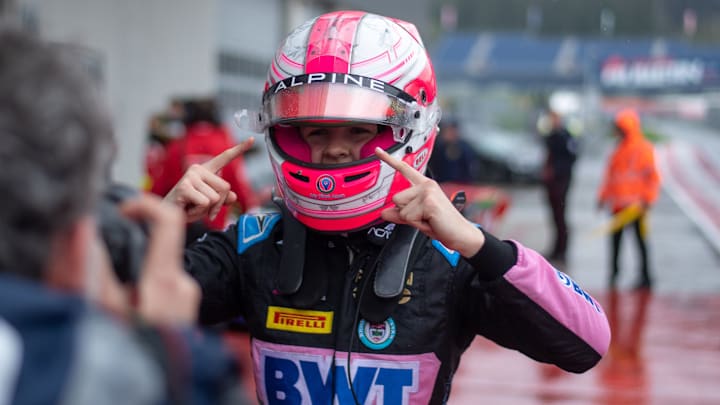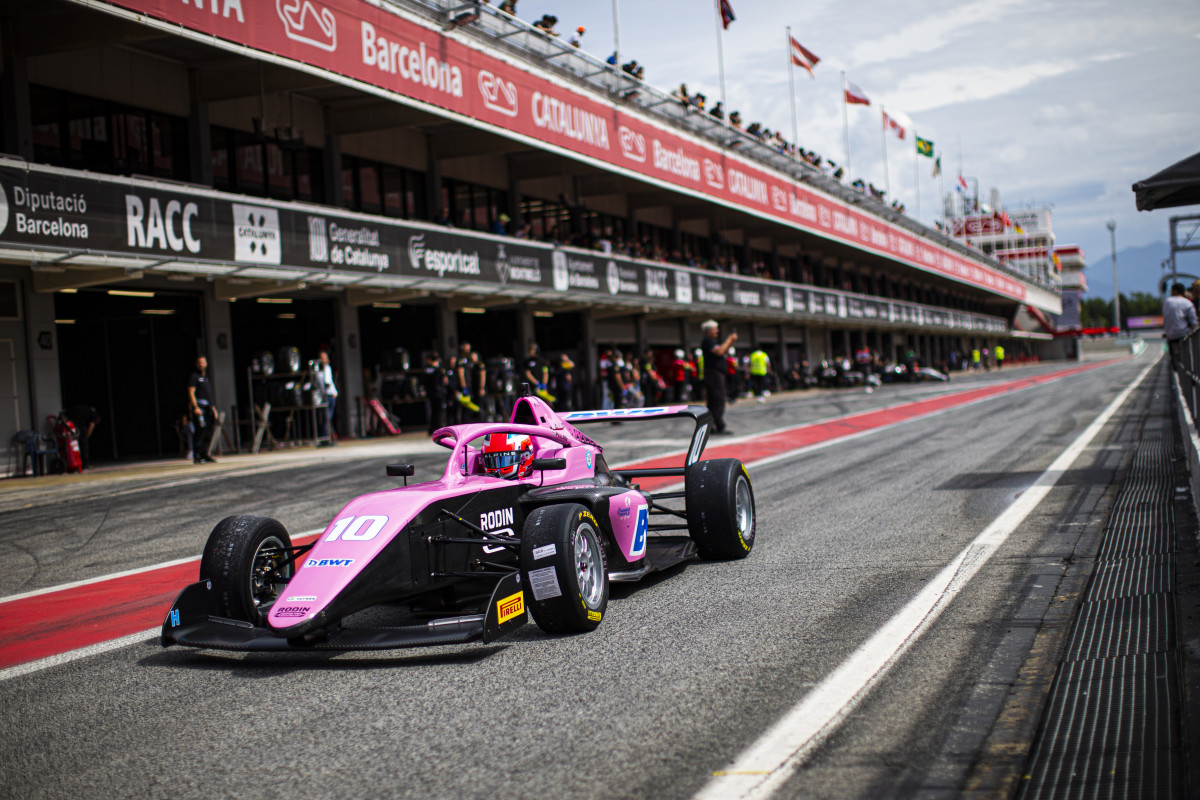Fuel for Thought: Abbi Pulling on Competing in F1 Academy’s Inaugural Season

There are several hurdles to jump over to compete in motorsport. There’s the natural talent, access to karts and circuits and funding. Lots of funding. With the current F1 grid having spent millions to get to where they are today, it raises the question: What if you don’t have that kind of capital?
One young talent has made her way to some of the most respected racing categories despite these hurdles is British driver Abbi Pulling. She’s got championship titles under her belt and is currently competing in the newly launched F1 Academy with RODIN Carlin. Pulling has faced a lot of highs and lows in her racing career so far, but she’s still as passionate as ever. As F1 Academy gets ready for the final round of its inaugural season, Sports Illustrated caught up with the driver to hear about her motorsport journey.

Sports Illustrated: Abbi, how did you fall in love with motorsport?
Abbi Pulling: I got into motorsport through my dad. He raced in the U.K., and I was always there. I just absolutely loved the atmosphere and got hooked. I asked to have my own go at the age of 8, so I jumped in a go-kart and away I was. I’ve never known a difference really. I’ve been at a track since I can remember.
SI: How did you find racing affected your childhood? Were you able to keep a good life balance? Lots of drivers say that they would spend their younger years racing and away from home all of the time.
AP: For me, it's not too dissimilar. I was basically racing all the time, as much as I could do. Every weekend, I’d be asking my dad, Can we go to the track? and he would normally ask to have just one weekend off. Nine times out of 10 we would have no weekend spare. I would go to school, do my normal school stuff with my mates, and then go racing on the weekends. It was quite full on for me, little Abbi, but it was what I wanted to do and where I wanted to spend my time.
SI: When did you get that first opportunity where you thought, Oh, wait, this could actually become my full-time job?
AP: When I went karting and moved up into juniors, I won two British titles. I was the first female to win, and the first person to win it back to back. I always like being able to say, like, it’s not just the female thing but as a person in general. I think at that point, I was like, O.K, now what do I go on to? Where do I go now? What’s next? For me, I went into Ginetta Junior [the U.K.’s longest-running and most prestigious junior series], so I tried my hand in that. Then it was actually when the W Series [an all-women racing series] came along, that it gave me a little bit of hope to go into single seaters. It was something that I’d always liked to have done, but financially it was impossible for my family.
SI: As well as being a racing series just for women, W Series was also free to enter and gave out prize money to help their talent further fund their careers. It even became a support event to F1, which was great for exposure, but entered administration earlier this year for financial reasons. Abbi, you got very close to trying your luck at W Series, didn’t you?
AP: I did a year of British F4, hoping then to go into W Series, but because of the pandemic they kept the drivers from the year prior. So I ended up doing another year of British F4, but I ran out of funding halfway through and couldn’t continue. It’s always been a dream and even though I’ve had some financial difficulties, to still be racing now, and in a single seater, is just amazing.
SI: You mentioned funding. Can you explain to me how expensive it really is racing?
AP: There are so many people operationally that go into running these cars. Then there’s the technology behind it, and generally, running the car is not cheap. So then you factor in the teams having to pay the engineers, mechanics, number twos, truck drivers, just getting over the borders puts the price up. In karting people can spend $125,000 on their 8-year-old kid, which is absolutely crazy. To me, that’s a lot of money. You then get to the point where you’re in F3 and F2, which are support series to F1, and it’s in the millions. So it’s an insane financial commitment. It’s not for me, being in the F1 Academy, as we have a lot of support from F1, who cover about two-thirds of the cost to make it really affordable.
SI: You’re fifth in the standings for F1 Academy’s inaugural season. How did that opportunity first come about and how are you finding the racing?
AP: When I found out that the RODIN Carlin team were in the championship, we got in touch quite quickly. I had conversations with them in British F4, actually, but things just didn’t quite align. But then Stephanie Carlin, the deputy team principal, said that she’s always wanted to work with me, and it’s nice to hear that from her! It has been a tough year, and I’m currently fifth in the standings. I think the expectation was to be a bit higher, but we have the pace and over the first few rounds we had to figure a few things out. Hopefully going forward into the season finale in Austin [that is the same weekend as F1’s United States Grand Prix], I know that we will be more competitive because of what we've done.
SI: In F1, you’re also an ambassador for the Alpine F1 Team. Can you talk me through what that role is like for you day to day?
AP: The main thing for me is the training at Alpine’s gym in Enstone. Every morning I’ll go in with David Thompson, who helps with human performance, and he sets my sessions, makes sure that I’m eating right and getting the most out of what I’m doing there. Every now and then I will go to the operations room, but it has been a bit hard this season with lots of clashes. I’m here in Zandvoort for the F1, going around the garage and helping not just on the driver side but looking after guests. Just just a bit of everything, really!
SI: You mentioned sharing the gym with the other Alpine athletes. Have you bumped into Esteban Ocon or Pierre Gasly yet, the team’s two F1 drivers?
AP: No, most of the time they’re in the factory or normally on the simulator!
SI: Alpine launched their rac(h)er programme last year that promotes the inclusion of women across the entire company. How have you been a part of this movement to bring equal opportunity in the workplace?
AP: In my summer break this year, I went and helped some of the rac(h)er girls at Whilton Mill. There are six of them in karting and I was there coaching them. Most of them are European, so they hadn't driven the race track before, so it was nice to spread a bit of my wisdom as I know that track quite well. It was really fun to see them all on track together!
SI: What does your downtime look like away from racing?
AP: I do a lot of graphic design. So in my spare time, I'll be working on it within motorsport. It helps pay my rent! It's a nice way to unwind for me, letting your creative side out. I've always liked it. My two favorite topics at school were math and art—two polar opposites, but two that I really enjoyed.
SI: Did you design your own racing helmet?
AP: Yeah! So I've designed quite a few people's racing helmets. A few people in British Touring Cars, racing driver Alice Powell, and I've just done one for Jess Hawkins [Aston Martin F1’s Driver Ambassador], but she's not got it done yet. It's a nice fallback, and I've got friends in that space as I worked for a few painters and designers, so I have quite a big appreciation for that side of it!
